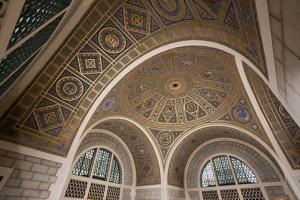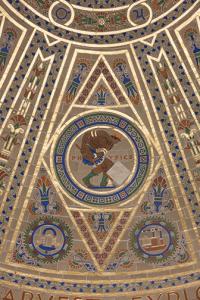Sunday, June 15, 2014
By:
Lincoln founded the National Academy of Sciences in the midst of the Civil War. Among its first tasks was to solve the problem of compass malfunction in iron-clad warships. Since then, some of the most brilliant people in the US have volunteered their time to produce reports that have had lasting impact on the nation.
I had occasion to go the National Academy of Sciences building yesterday to attend a discussion on the report “STEM Integration in K-12 Education”. I’ll pick out some salient points for you.
STEM integration blends science, technology, engineering, and mathematics in instruction rather than segregating them. More specific descriptions vary. Indeed, one of the central findings of the committee is that it would be much easier to move ahead in integrating STEM if we could establish a common lexicon. Still, the landscape looks encouraging.
Integrating the STEM subjects sounds like a good idea from a commonsense standpoint; it mirrors the way the subjects are used in the real world. Science and math should become more relevant and engaging if teachers can link them to the solving of real problems. Now that’s should, and as scientists we should be careful to look at evidence for this commonsense notion.
 And the evidence is that it does work! It’s difficult path for both students and educators though. Students need to have the links between science, engineering, and so forth explicitly pointed out to them. Teachers have to stretch their expertise to encompass all the disciplines. Administrators have to be flexible and energetic enough to support innovative approaches. Still, there are now an increasing number of high schools that put all but the most elite colleges to shame.
And the evidence is that it does work! It’s difficult path for both students and educators though. Students need to have the links between science, engineering, and so forth explicitly pointed out to them. Teachers have to stretch their expertise to encompass all the disciplines. Administrators have to be flexible and energetic enough to support innovative approaches. Still, there are now an increasing number of high schools that put all but the most elite colleges to shame.
I can't continue further without discussing the magnificence that is the dome of the NAS Building.
Photo: Encircling the rim of the wheel is an inscription:
"To science, pilot of industry, conqueror of disease, multiplier of the harvest, explorer of the universe, revealer of nature's laws, eternal guide to truth."
 Inside the wheel are eight medallions representing the extant sciences. Physics is of course included.
Inside the wheel are eight medallions representing the extant sciences. Physics is of course included.
Photo: On the wall is an excerpt from Aeschylus' "Prometheus Bound". I'll abridge even further:
"Hearken to the miseries that beset mankind. They were witless erst and I made them to have sense and be endowed with reason. . . . everything they wrought without judgment, until such time as I taught them to discern the risings of the stars and their settings. Aye, and numbers, too, chiefest of sciences, I invented for them . . . If ever man fell ill, there was no defence, but for lack of medicine they wasted away, until I showed them how to mix soothing remedies . . . Hear the sum of the whole matter--every art possessed by man comes from Prometheus."
A suggested correction: "Every art possessed by humankind comes from humans."
I miss the grandness of saying "man" and "mankind", but I'm striving to be more inclusive in my language. Constraint is a driver of creativity. It demands cleverness, and should it surprise anyone that "engineer" and “ingenious” are born of the same root?
Caleb L. Heath
